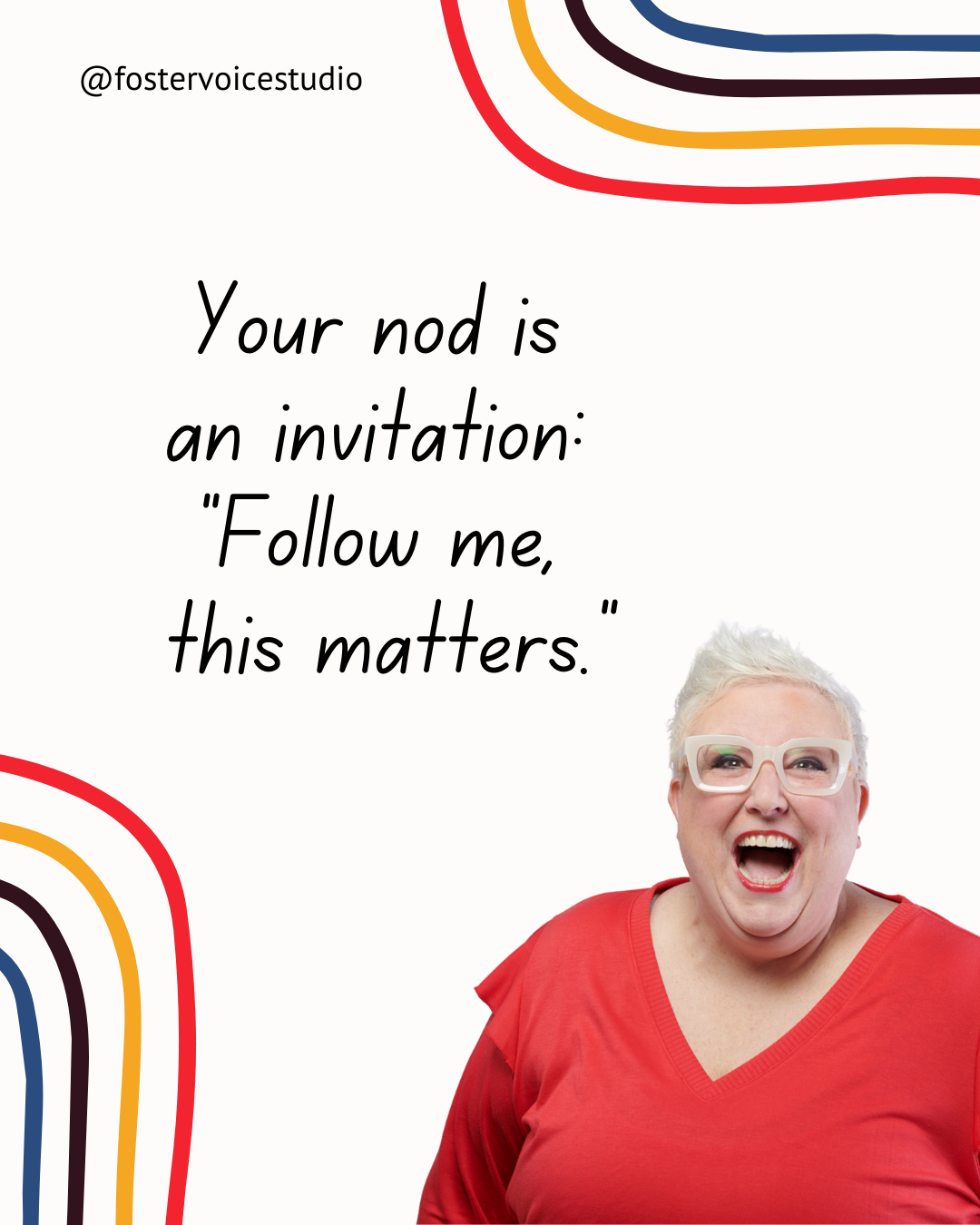The Power of the Simple Nod: What a Walk Taught Me About Connection
So, this summer, I decided I wanted to become… an outdoor exerciser.
Now, if you know me personally, you already know that sentence alone is hilarious.
I’ve never been what you’d call “outdoorsy.” My version of outdoor activity has typically been sitting at a restaurant patio for lunch—and even then, I’m silently praying the waiter brings me an indoor table if it’s too sunny or too buggy or if there are birds.
But something shifted this summer. I don’t know if it’s hormones, the state of the world, or maybe just divine intervention, but I found myself craving fresh air. Movement. Sunshine. Space.
So I started walking outside.
And, you know what? Turns out, that whole “go for a walk, get fresh air, it’s good for your mental health” thing?
It’s… true. Who knew?
I’ve been walking several times a week now. I even had to get new walking shoes (mine were over four years old). Now I’m kitted out with new Hokas and grateful for the tree-lined, paved paths near home where I feel safe walking alone.
But during those walks, something caught my attention—something that made me think a lot about nonverbal communication.
The Moment of Curiosity
As I walk, I pass people all the time—coming toward me on the trail. Some smile, wave, or say hello.
But others—many others—make zero eye contact. Nothing. Not even a flicker to acknowledge that we’re sharing the same sidewalk.
And I’ll be honest… it kind of hurts my soul a little.
I’m not trying to make best friends on the trail. I don’t want to stop and have a whole conversation.
But would a simple nod of acknowledgment kill ya?
That tiny moment—just a second of connection—can completely change the emotional tone of an encounter. It says:
“I see you. You exist. We’re sharing this space together.”
It’s simple. But it’s powerful.
And that got me thinking…
In the courtroom, that same small gesture carries massive weight.
The Nod as Nonverbal Communication
Let’s talk about the nod.
A nod can be:
-
A nod of acknowledgment — “Yes, I hear you.”
-
A nod of agreement — “I’m with you.”
-
A nod of confidence — “You’ve got this.”
-
A nod of encouragement — “Keep going.”
-
A nod of invitation — “Tell me more.”
That little movement of your head can do so much work for you as a communicator.
When used intentionally, it signals warmth, connection, and presence.
When paired with calm eye contact, steady breath, and congruent facial expression, it helps jurors feel safe—like you’re with them, not above them.
And here’s the science: neuroscientifically speaking, nodding can activate mirror neurons in your jurors’ brains.
When you nod, they’re more likely to mirror that behavior back—internally or even physically.
That’s nonverbal rapport.
It’s subconscious agreement.
Their brains start to sync with yours.
That’s not manipulation.
It’s alignment.
The Danger of the Over-Nod
Of course, like anything powerful, nodding can be misused.
Have you ever talked to someone who nods too much?
You can practically feel their neck muscles straining from all that movement.
That kind of over-nodding sends mixed messages. It can come across as overly eager—or worse—impatient.
I had a college professor who did that exact thing. He’d nod vigorously through your answer to a question, but his eyes said, “I’ve already moved on.”
That mismatch made me shut down.
It felt like fake empathy—his body saying, “I’m with you,” but his energy saying, “Please stop talking.”
And that’s the danger.
When your nonverbals and energy don’t match, your listener’s nervous system registers mistrust.
Jurors are especially attuned to those signals.
The Balance of Presence and Purpose
So how do you nod well?
It starts with presence.
If you’re present—breathing, grounded, and connected—your nods will feel natural and sincere. They’ll punctuate key moments in your message, not fill silence out of nervousness.
A well-timed nod communicates something words can’t:
It shows that you’re listening to the jury even while you’re speaking.
It conveys humility, approachability, and confidence—all at once.
Because confidence isn’t loud.
Confidence is steady.
It’s the attorney who can pause, breathe, make eye contact, and give a slow, deliberate nod that says:
“I trust you to get this.”
“I know this matters.”
“I’m right here with you.”
That’s leadership.
A Quick Self-Check
Here’s a simple exercise to try this week:
Next time you’re in conversation—at home, in a meeting, anywhere—notice how often you nod.
Are your nods reflexive, fast, disconnected from your face?
Or are they intentional—anchored, meaningful, and in rhythm with what’s being said?
Then take it a step further.
Try adding a breath between nods.
Literally: inhale, nod, exhale.
This keeps your nervous system regulated and prevents performative over-nodding.
Because jurors don’t just listen to your words.
They listen to your energy.
And your energy shows up in the smallest gestures.
The Takeaway
Connection doesn’t always need grand gestures.
Sometimes it’s just one slow nod.
A nod that says,
“I see you.”
“I respect you.”
“I’m not in a rush.”
That’s powerful communication.
It humanizes you. It builds trust. It helps jurors lean in.
So this week, whether you’re walking a trail or standing in front of twelve strangers—practice the power of the simple nod.
It might just change how people feel in your presence.
And it will definitely change how you feel in theirs.
Until next time—keep breathing, keep connecting, and keep fostering your voice.
LET'S STAY CONNECTED
You’re already speaking. Let’s make it count.
Get one smart, time-saving vocal tip each Tuesday to help jurors learn faster, retain more, and stay connected — so your message lands the first time.
You're safe with me. I'll never spam you or sell your contact info.


